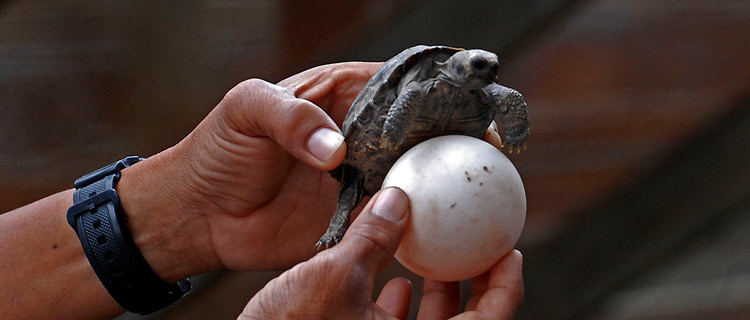
Centre researcher Jon Norberg explains why evolution would ensure centuries of additional alterations to global biodiversity even if we halt anthropogenic climate change today.
Eco-evolution and climate change
Don't forget Darwin
Anthropogenic climate change will affect biodiversity, but not without evolution playing its part
You should listen to the old man. It is somewhat conventional wisdom that anthropogenic climate change will alter the world's biodiversity and ecosystems, but many of today's computer models seem to forget Darwin's insights on species' competition and evolution.
Most current predictions state that global climate change will alter biological diversity and the ecosystems we rely upon, but there is a general weakness in most of these predictions because they omit important, fundamental ecological processes such as species evolution and competition.
So-called "eco-evolutionary dynamics" occur frequently in nature and can influence responses to climate change. The problem is that they have been rarely explored in concert.
Get biologically real
In a study recently published in Nature, centre researcher Jon Norberg has investigated how ecological and evolutionary processes interact and influence species' responses to climate change. Together with researchers from Canada, the US and France, Norberg highlights the significance of species' interaction with each other and how this affects their reaction to climate change.
In their study, Norberg and his colleagues have created a more biologically realistic model by allowing spatial, ecological and evolutionary processes to interact.
The results will force a rethink in the development of climate change prediction models, Norberg says:
"Tremendous scientific resources have been allocated to developing sophisticated models on future global climates. Most biological models, however, focus on how dispersal alone affects communities as they move from one geographic location to another. But by only focusing on dispersal, they forget species interactions and evolutionary adaptation. This is an important shortcoming," Jon Norberg explains.
"Adaptation to new climates could moderate the direst predictions of biodiversity loss, whereas species interactions could both enhance or diminish extinction risks".
Methodology
In their study, Norberg and his colleagues created a model that not only allows species to disperse to better environments as the planet warms, but also to adapt locally to changing conditions as well as interact with other species.
A set of 21 species with different temperature preferences were distributed along a landscape that mimicked the range of temperatures you normally find in a gradient from the polar regions in the north via the equator to the polar regions of the south.
They then simulated a climate change scenario that plateaued after 300 years, with higher global temperature. This way they could study what happened during and after this climate change.
The 21 "species" mentioned above were mathematically generated species given different initial thermal optimum while genetic variances and dispersal rates were drawn randomly (from uniform and log normal distributions, respectively). Each population had a mean thermal optimum (a quantitative trait) that could evolve in response to natural selection at a rate proportional to genetic variance.
Competition matters
The results differed from previous predictions because they included the aspect of competition between species. The study revealed that high dispersal does not rescue competing species from climate change. Although some species have sufficient genetic variance necessary for evolutionary adaptation, many do not, and these species will face extinction as competing species from warmer climates tend to overtake them.
For instance, as temperatures rise warm-adapted species are likely to colonize polar regions which temporarily will increase species richness. However, the warm-adapted species might eventually outcompete the polar species, leading to an overall decline in species richness.
Also, high dispersal means species are stretched thin. This means rare species face higher risk of extinction during climate change.
"Contrary to conventional wisdom, high dispersal did not automatically preserve species under climate change because competition between species will still cause extinction," Norberg says.
A long-lasting change
The results also showed that ecological and evolutionary processes set in motion during climate change might continue to generate extinctions long after any stabilisation of the climate. Norberg and his colleagues' model revealed that most extinctions happened after climate stabilisation which could last for several hundred years.
"Even if we halt anthropogenic climate change today, ecological evolution would ensure centuries of additional alterations to global biodiversity," says Norberg.
References
Norberg, J., Urban, M. C., Vellend, M., Klausmeier, C., Loeuille, N. 2012. Eco-evolutionary responses of biodiversity to climate change. Nature Clim. Change. doi:10.1038/nclimate1588
Jon Norberg works with conceptual development of the resilience and complex adaptive systems (CAS) frameworks. His work spans theoretical ecology, such as the interaction between different response processes such as evolution, species sorting and dispersal, as well as the role of human information networks in solving complex management tasks.






